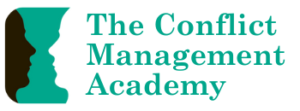Bill Eddy, co-founder of the High Conflict Institute, is well known for his work on managing conflict with what he calls “high conflict people” (HCPs). This book provides a range of process and intervention tips (including scripts for what to say in specific situations) to help mediators work with HCP in a range of conflict situations. These strategies are necessary, the authors assert, to enable mediation to have the best chance of reaching an outcome when one or more HCPs are involved.
The authors define a high conflict personality as a person who tends to have a pattern of four characteristics which repeat in their lives in many situations:
1. Preoccupation with blaming others;
2. All-or-nothing thinking and solutions;
3. Unmanaged or intense emotions;
4. Extreme behaviour or threats.
Key characteristics of HCPs are “they have interpersonal dysfunction, they lack self-awareness of their interpersonal behaviour, they rarely or never change their behaviour, and they believe that their problems are caused by forces outside themselves.”
Because of this, the authors say HCPs frequently get stuck in conflicts that most people could easily resolve. They tend to have a narrow range of repetitive behaviour that tends to maintain or increase conflicts. HCPs become fixated on a target of blame and then may spend months or even years in their efforts to get their target to do something.
The authors clarify that the term HCP is not meant to be a diagnosis, but a shortened term for people with this intense pattern of conflict behaviour. My initial concern reading this is how well mediators are placed to evaluate a person’s “intense pattern of conflict behaviour” based on their limited interaction with their clients over a short period of time. It seems to me that there are many people who may be falsely accused of being a HCP, such as people who are neurodiverse. The authors do note in passing that people with diagnoses such as ASD or ADHD may have similar patterns of dysfunctional interpersonal behaviour at times, and that they can also usually benefit from the same tips and method suggested in the book. However, while almost anyone can be supported through the kind of highly structured mediation process described in the book and achieve an outcome, the question that remains for me, is whether that process is the best one for those individuals, or are we missing out on something more appropriate?
The authors argue that while HCPs do not have the required level of insight or the capacity for self-reflection required for the standard facilitative or transformative mediation approaches, mediation is possible with HCPs, so long as the process and interventions are adapted as recommended. They promote three main mediator skills: connect with empathy, attention and respect; tightly structure the process; educate the parties. Other recommended strategies include avoiding traditional interest-based negotiations and discussions of the past; having the clients (rather than the mediator) set the agenda; and having a very structured process of proposals, questioning and counter-proposals rather than the usual option generation stage. They also describe specific steps to ensure that HCPs are likely to stick with any decisions made.
They advise against:
• Trying to give parties insight into their own behaviour;
• Emphasizing the past;
• Opening up emotions;
• Telling them they have a HCP;
• Supporting or encouraging parties to apologise.
The book includes a discussion of what the authors call “pre-mediation coaching”, but what they describe is not what I would call coaching. It is rather an information provision, education, and skills development session. While this may well be a helpful pre-mediation intervention, it is not the same relationship or process as coaching. I think the term is a little misleading in this context also because one of the conditions of successful coaching is that a person is willing to change. HCPs, as the authors describe them, are unwilling to change and so are unlikely to be receptive to typical coaching interventions based on reflection and maximising choice and agency.
I found some things in this book interesting, such as the concepts of negative and positive advocates, and the content in the chapter on workplace mediations about the often unreasonable expectations parties to those conflicts may have when one or more HCP is involved (which probably apply to many workplace conflicts whether or not a person involved is identified as a HCP).
I was left wondering whether the content could have been provided as advice for how to respond to certain particularly challenging behaviours in mediation, without the need to even introduce the concept of HCPs. I find the concept a little troublesome and at times potentially dangerous.

